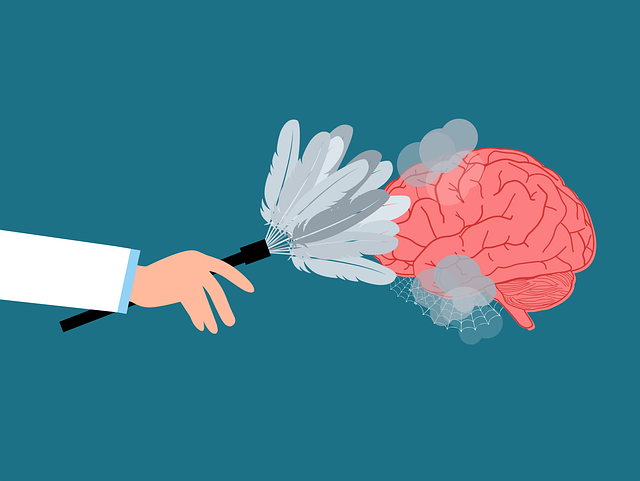Parker Trauma Therapy, utilizing cognitive behavioral techniques, empowers individuals post-trauma by replacing negative thought patterns with positive perspectives through structured daily routines and mindfulness exercises. This holistic approach, beneficial for both clients and mental health professionals, enhances emotional regulation, stress management, and resilience while preventing burnout. Though not a quick fix, consistent practice leads to improved coping skills, depression prevention, and overall well-being, making it a vital tool in comprehensive mental healthcare alongside evidence-based practices.
Discover the power of positive thinking as a therapeutic tool with Parker Trauma Therapy. This article explores how implementing positive thinking exercises can significantly enhance healing processes, offering a roadmap for mental health professionals and individuals seeking personal growth. From understanding the fundamentals of Parker Trauma Therapy to unearthing effective strategies for exercise implementation, we delve into the benefits and challenges, providing insights crucial for navigating this transformative approach.
- Understanding Positive Thinking Exercises in Parker Trauma Therapy
- Strategies for Implementing Positive Thinking Exercises Effectively
- Benefits and Challenges of Incorporating Positive Thinking in Healing Processes
Understanding Positive Thinking Exercises in Parker Trauma Therapy

Positive Thinking Exercises in Parker Trauma Therapy offer a powerful tool for individuals seeking to overcome traumatic experiences and foster resilience. This therapeutic approach, rooted in cognitive behavioral techniques, focuses on challenging and replacing negative thought patterns with more adaptive and positive ones. By utilizing various strategies such as cognitive restructuring and reframing, clients learn to view their traumas from new perspectives, promoting healing and growth.
In the context of Parker Trauma Therapy, these exercises are designed to help individuals manage and reduce symptoms associated with trauma, including anxiety, depression, and flashbacks. Through consistent practice, clients develop better coping mechanisms, enhance their emotional regulation skills, and improve overall well-being. This holistic process not only facilitates recovery from past traumas but also serves as an effective Burnout Prevention Strategy for Healthcare Providers who often encounter high-stress situations in their line of work, complementing traditional Conflict Resolution Techniques.
Strategies for Implementing Positive Thinking Exercises Effectively

Implementing positive thinking exercises effectively requires a structured approach that integrates seamlessly into daily routines. One powerful strategy is to incorporate gratitude practices, such as keeping a gratitude journal or sharing three things you’re thankful for each day. This simple act encourages individuals to focus on the positive aspects of their lives, fostering a more optimistic mindset. Additionally, practicing self-compassion through mindfulness techniques like meditation can help individuals challenge negative thoughts and replace them with more constructive ones.
For mental health professionals, integrating Parker Trauma Therapy principles can enhance the effectiveness of these exercises. Conducting regular risk assessments for clients allows professionals to tailor interventions and ensure safety. By combining these strategies with a self-care routine development, both for professionals and their clients, resilience building becomes more accessible. This holistic approach not only improves mental health but also creates a supportive environment conducive to positive thinking and emotional well-being.
Benefits and Challenges of Incorporating Positive Thinking in Healing Processes

Incorporating positive thinking as a therapeutic tool has shown significant promise in various healing processes, particularly in Parker Trauma Therapy. The benefits are vast; it can enhance one’s ability to cope with stressful situations, promote resilience, and even aid in depression prevention. By focusing on optimistic thoughts and reframing negative experiences, individuals can develop better coping skills, leading to improved mental well-being. This approach empowers people to challenge their perspectives, fostering a more positive and balanced mindset.
However, the challenges are not insignificant. Positive thinking is not a quick fix; it requires consistent practice and commitment to see lasting results. For those struggling with severe trauma or deep-seated negative thought patterns, making this transition can be difficult. It may involve unlearning years of negative self-talk and replacing it with positive affirmations, which takes time and patience. Moreover, while positive thinking is a valuable tool, it should be one part of a comprehensive approach to mental health care, alongside other evidence-based practices like cognitive-behavioral therapy and mindfulness exercises, especially for managing stress reduction methods and coping skills development.
Positive thinking exercises, as a core component of Parker Trauma Therapy, offer profound benefits for healing emotional trauma. By effectively implementing these strategies, individuals can experience improved mental well-being and enhanced coping mechanisms. While challenges may arise, recognizing the long-term advantages encourages consistent practice. Embracing positive thinking empowers individuals to navigate life’s difficulties with resilience and hope, ultimately fostering a more optimistic and healthy mindset.











